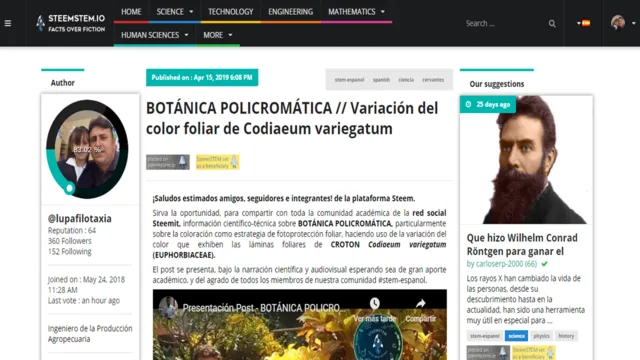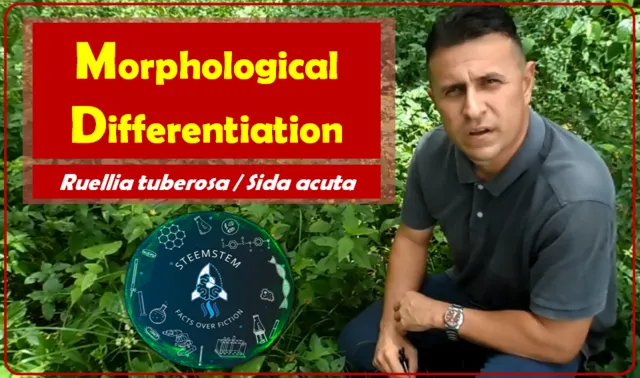
Dear friends, followers and members! of the Steem platform.
I take this opportunity to share scientific and technical information on MORPHOLOGICAL DIFFERENTIATION, specifically on morpho-comparative aspects between the behavior species Ruellia tuberosa (ACANTHACEAE) and Sida acuta (MALVACEAE) with the academic community of the Steemit social network.
Introduction
The morphological differentiation, as a line of botanical study, seeks to identify, by means of the same or dissimilar characters, the external and internal morphological attributes that the plant species present in the biogeographic environments where they inhabit, fundamentally to know the relation between form, time and space.
Consequently, basically the objective of this post, is to analyze the morphological differences of two species with arvense behavior that coexist in the same synecological space, as in the case of Ruellia tuberosa (ACANTHACEAE) and Sida acuta (MALVACEAE) .
Morpho-comparative study
In botany the morphology, is a method of taxonomic work that allows to study, from the comparative point of view, the variability and particularity of the vegetal species, attending to the differentiation of; A. shape and B. Structure, mainly of organs and tissues, obtaining with it descriptive data, used for the grouping of species that share morphological similarities, information that also leads to establish adaptive relationships between plants and their habitat.
Therefore, and in order to present morphological differentiation parameters present in plant species, which coexist in synecological areas of random distribution, a morpho-parametric characterization was made at field level, starting from the organographic variability of the following specimens;
Specimen I
Ruellia tuberosa, is an herbaceous plant of arvense coexistence, taxonomically is located in the division Magnoliophyta, class Magnoliopsida and family Acanthaceae, originally from Jamaica, of geographic distribution around the tropical strip, this species usually occupies the perimeter canopy of cultivated areas, in the agricultural areas of Venezuela it is known as YUQUILLA.
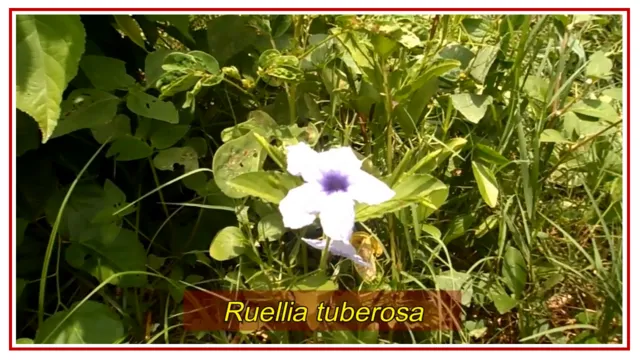
Fig. 2 Seedling Ruellia tuberosa. Author: @lupafilotaxia.
Specimen II
Sida acuta, known in Venezuela as ESCOBILLA, is an herb of shrub morphology, from the division Magnoliophyta, class Magnoliopsida and family Malvaceae, of Central American origin with extensive pantropical distribution, it is considered as arvense, for its exponential growth in Poaceae cultures and agricultural areas with low incidence of sunlight.
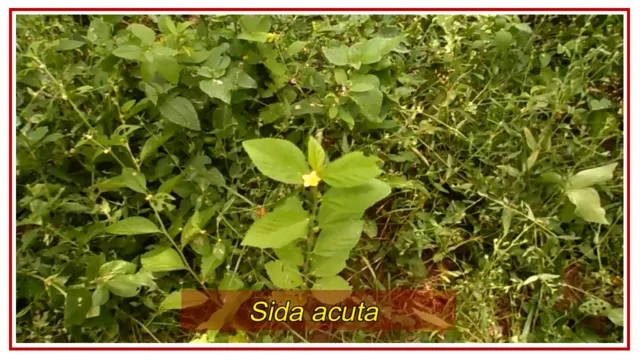
Fig. 3 Seedling Sida acuta. Author: @lupafilotaxia.
Morphological Differentiation
Root morphology
The morphological structure of the root system of Ruellia tuberosa is of the tuberous type, which indicates that it has fibrous main and secondary roots with visible thickening, with respect to S. acuta, which has a typical root (pivoting), with lateral roots that are little developed in comparison to the main root.
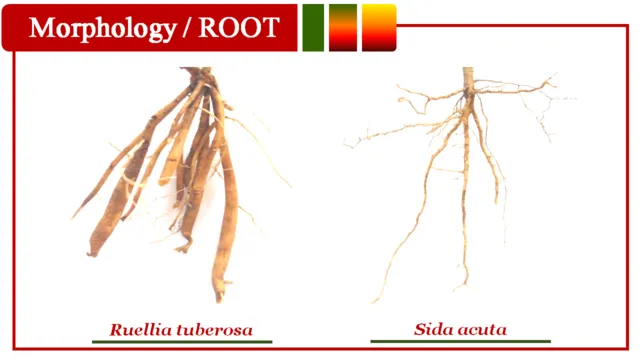
Fig. 4 On the left, root of Ruellia tuberosa is observed, and on the right root of Sida acuta. Author: @lupafilotaxia.
Stem morphology
In relation to the stem, Ruellia tuberosa presents tetragonal stems of herbaceous consistency, unlike Sida acuta, which exhibits stems of cylindrical and semi-woody morphology.
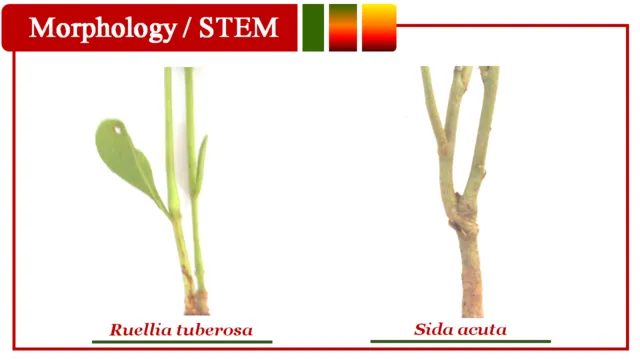
Fig. 5 On the left, there is a stalk of Ruellia tuberosa, and on the right stalk of Sida acuta. Author: @lupafilotaxia.
Morphology of the leaf
| Insertion to the stem | ||
| Division of limbo | ||
| Limbo form | ||
| Edge of limbo | ||
| Type of nerve | ||
| Leaf apex | ||
| Foliar base |
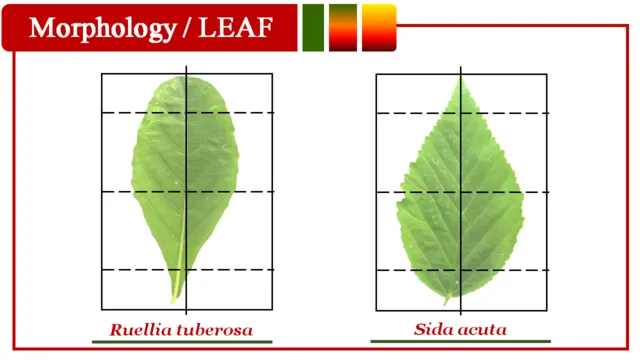
Fig. 6 On the left, leaf blade of Ruellia tuberosa is observed, and to the right of Sida acuta. Author: @lupafilotaxia.
Filotaxy
The Ruellia tuberosa, presents an architectural arrangement or arrangement around the stem, with OPPOSITE orientation (two leaves per leaf node), while Sida acuta, exhibits an ALTERNATE type adjusted model (one leaf per leaf node).

Fig. 7 On the left, the phyllotaxis arrangement of Ruellia tuberosa can be seen, and to the right of Sida acuta. Author: @lupafilotaxia.
Flower morphology
Regarding the floral morphology, Ruellia tuberosa has purple flowers, 5 visible petals fused together, while Sida acuta, flowers around the apical area of the plant, with actinomorphic symmetry and yellow.
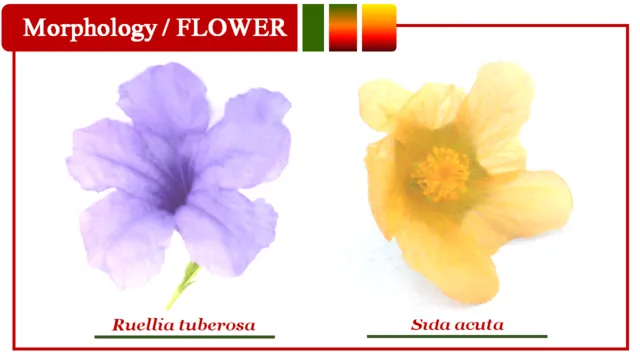
Fig. 8 On the left, the flower of Ruelia tuberosa is shown, and to the right of Sida acuta. Author: @lupafilotaxia.
Variability and coexistence
We found little morphological variability, this is probably due to the phenotypic expression of the species considered, which from the evolutionary point of view have adapted to a dynamic of random dispersion, which allows them to coexist maintaining balanced morphological characters, therefore infer that filotaxy can be the morphological parameter of interaction in the same synecological space without affecting each other, this is why it represents the most unequal morphological attribute between both species (Ruellia tuberosa and Sida acuta), this reflects the adjustment in the foliar arrangement and architecture, to reduce the interference in the capture of light photons.
SCIENTIFIC CONTRIBUTIONS OF THIS PUBLICATION
- The socialized information, part of the morphological differentiation as a descriptive element, to elucidate the taxonomic aspects or botanical attributes, which may or may not be related to the random synecological distribution of the species Ruellia tuberosa and Sida acuta, therefore, the study extends the relative knowledge of both species, by pointing out the integration of these in heterogeneous communities, where each occupies a space or residence ecology, the phylaxic formation forming the unequal parameter, which feasibly allows them to coexist in a reciprocal way, by retaining light radiation without interference between yes.
BIBLIOGRAPHICAL REFERENCES CONSULTED AND CITED:
[1] Amo S. Clave para plántulas y estados juveniles de especies primarias de una Selva Alta Perennifolia en Veracruz, México. Biótica. 1979; 4:2: 59-108.
[2] Ricardi M., y Hernandes A. Morfología de plántulas y árboles venezolanos. Public. Rev. Forest. Venezolana. ULA – Mérida, Venezuela. 1997; 27: 15-56.
[3] Simpson M. Plant Systematics. Elsevier. 2006; 286-289.
[4] Strasburger E., Noll F., Schenck H., y Schimper A. Tratado de botánica. Editorial Marin S.A. Barcelona – España. 1974; 739-747.
[5] Tripp E. Evolutionary relationships within the species-rich genus Ruellia (Acanthaceae). Syst. Bot. 2007; 32: 628–649.
ATTENTION / Readers and Followers
If you want to read more scientific articles of excellent academic quality, do not waste time, and visit the label #steemSTEM, is a large community that values and promotes scientific content, mainly in the areas of Science, Technology, Engineering and Mathematics.

INVITATION
Dear reader, if you wish to obtain more information about it, join our server in Discord
OBSERVATIONS
✔ The POST 📧📨 was uploaded using the official app of https://www.steemstem.io
OBSERVATIONS
✔ The POST 📧📨 was uploaded using the official app of https://www.steemstem.io
You can visit the official app of our community
https://www.steemstem.io
